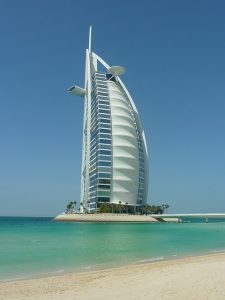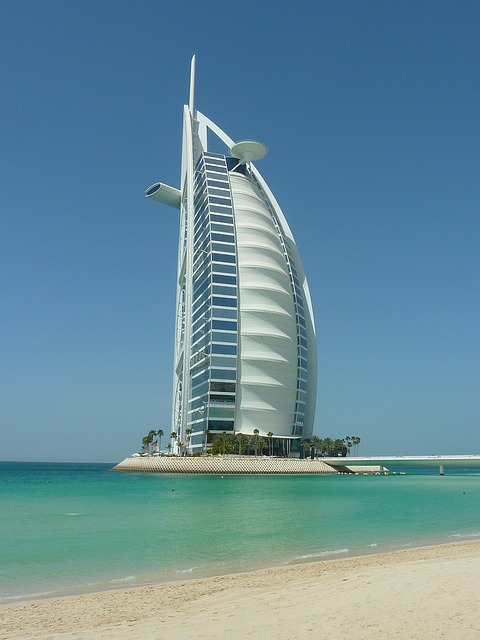Has the growth in the use of Virtual Reality affected BIM in Dubai?
BIM is becoming more widely used in the UK at the moment, due to the Government mandating that it be used, but across the world, the take-up is a lot slower. Having a base both here and in Dubai means that we can see the differences in how BIM in Dubai is being used as opposed to how BIM in the UK is being used and we have seen that it is becoming more widespread in the UAE, with more people involved in the construction industry adopting an open and inclusive attitude towards it.
This really excites us as we believe BIM projects can bring a huge range of benefits to the Middle East, as long as contractors have the tools they need to realise the full potential of BIM. A BIM build offers contractors the potential to save money on both building modelling and across the whole lifecycle of projects. Many of these benefits haven’t really been seen in the Dubai, municipality or the rest of the Middle East yet due to their being no clear decision on the best way to visualise plans so that everyone can access them, and not just the engineers.

Dubai is definitely at the forefront of the drive towards the total adoption of BIM building in the Middle East, and many projects are underway that are pushing the requirements for the use of BIM. This drive means that more and more construction companies in the area are having to create BIM files for their projects, meaning that even if developers aren’t interested in adopting BIM they are having too and so the ability to add value to a project is imperative. As a consultancy firm, we can see that it will be easier to get BIM more widely adopted if it is seen as a valued source and not just a cost.
This is where VR (virtual reality) comes in. VR is a relatively new technology that until now has been limited to gaming, but more and more industries are beginning to see how it could benefit them – and construction is just one of these. One of the key benefits of VR is that it can allow anyone involved in the construction project to see exactly what the building and the built environment will look like in real life. 3D modelling has allowed us to do this a little bit before now, but what VR does is make the process more immersive and totally accurate.
Models that are produced using VR will enable architects and building owners to be able to explore the building and environment in much more detail, while also giving them more flexibility. You can use VR to be able to move in a space that doesn’t actually exist yet – in a way that no other design technique allows you to do. There have already been a lot of advances in the use of VR already – let’s take the example of a plant room. What the use of VR and BIM allow us to do is to display the plant room as a 3D holograph which is scaleable in size. We can then take a closer look at the pipework in the room in relation to the frame construction and other technical components. This then makes the model much more intelligent in terms of planning and product information and can be used as a part of any construction work meetings where the various design disciplines are being discussed.
Another thing that VR allows us to do is to place an actual product in a real room as a hologram. For example, you can see exactly where a pump or a boiler would fit into an existing plant room so you can find the best place for it to sit and also whether the connections are in the right place or not before you undertake any expensive installations.
VR can also help in the maintenance stage when the product is actually in place. A service engineer can use VR to look at the technical product and gather real-time data on any errors, scheduled maintenance that needs doing, or working hours. VR can also be used by the manufacturer of the product if the service engineer needs a second pair of eyes when they are dealing with an issue.
As you can see interacting with a VR space has come on in leaps and bounds recently, but we predict there will be even more developments in years to come that will allow even more interaction to take place.
At the moment, VR is restricted by technology, with many building environments taking place on large computers meaning the VR experience has to take place on this computer with a headset which makes the user experience a bit limited and very static. Also, many VR companies are building environments on a project by project basis which can be very labour intensive. In the future, it is believed that VR and BIM will rely more and more on cloud computing, which will mean that building models such as these can be automated. Cloud computing technology will also allow design changes to be made much more easily, and of course, the models will be able to be viewed on many different devices including mobiles making them so much more accessible. This will put VR and BIM models in the hands of everyone in the construction process, from architects and CAD designers to facilities manager and the end building user.
This advance will allow us to really start seeing the power of VR in driving the benefits and value of BIM in the construction industry. Having a SaaS approach to BIM and VR will bring massive savings in terms of budget and time, which are critical factors in an industry where it is essential that projects are completed on time in order for return on investment to be maximised. BIM also brings about a much greater accuracy in models which will have a positive impact on both space planning and flow management. Issues can, therefore, be worked out while you are still in the design process, rather than waiting for the final building to be completed and then having to correct snags.
However, both VR and BIM are in the foundation stages in Dubai, and the rest of the UAE will be watching Dubai closely to see how both technologies pan out. If you need any help or advice on BIM Dubai then please give us a call on +971 4 556 1988 (UAE) or 0161 427 0348 (UK) or drop us an email to office@thecadroom.com and we will be more than happy to help.

